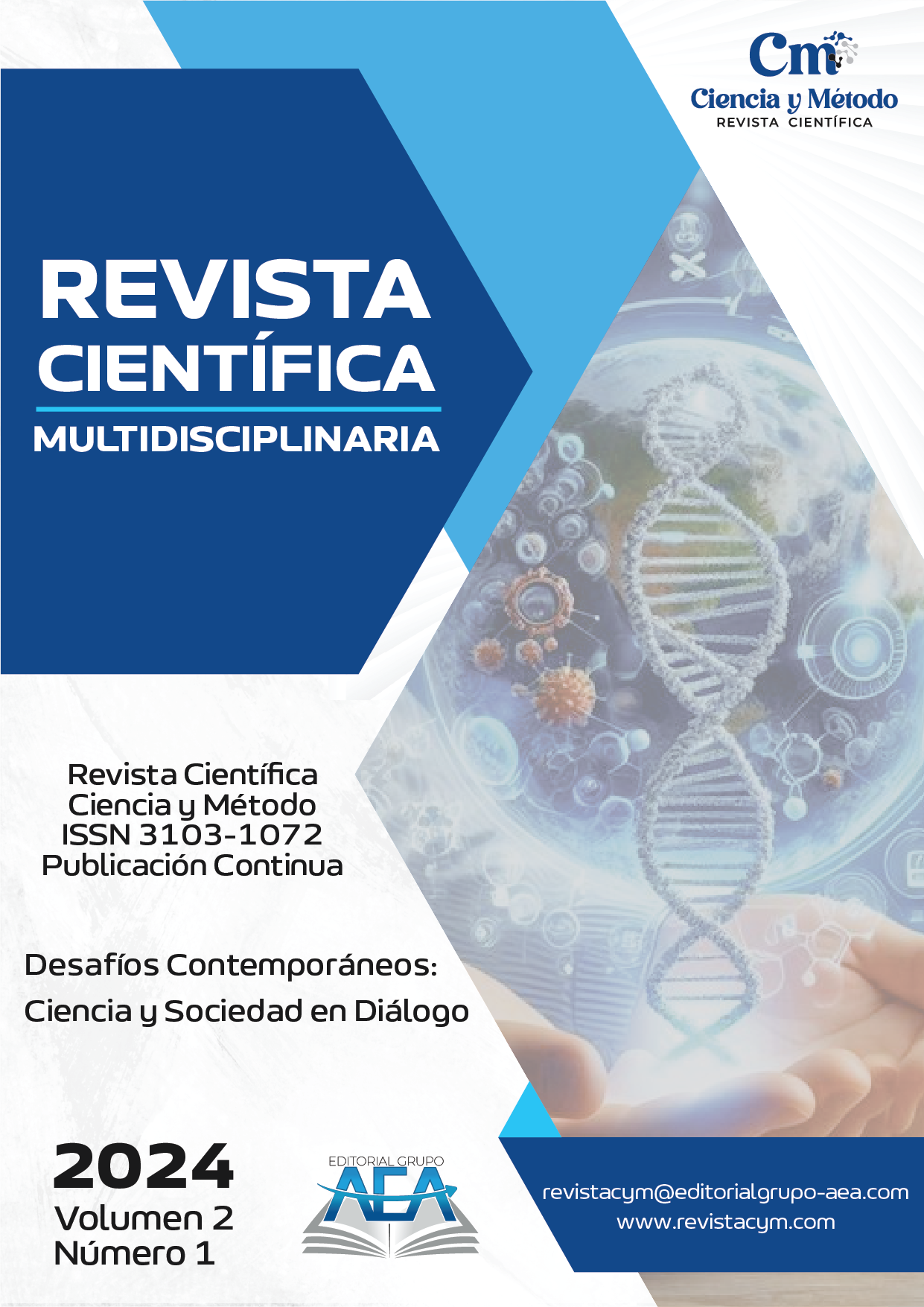Adoption of sustainable technologies in Information technology infrastructures
Main Article Content
Abstract
The growing need to reduce the environmental impact of technological infrastructures has prompted the systematic analysis of the adoption of sustainable technologies in information technology (IT). This study, based on an exploratory literature review of sources indexed in Scopus and Web of Science between 2013 and 2024, identifies key dimensions such as energy efficiency in data centers, the use of renewable energies, the ecological design of hardware and the implementation of environmental regulations. Among the most relevant findings are the economic and environmental benefits of practices such as virtualization, the use of artificial intelligence in thermal management, the adoption of clean energy and eco-design. However, technical, economic and regulatory barriers persist, especially in developing countries. The analysis shows that sustainability in IT requires not only technological innovations, but also structural reforms in management models, regulations and organizational culture. It is concluded that a sustainable digital transition requires coordinated efforts between governments, businesses, academia and civil society, aimed at integrating sustainability as a cross-cutting principle in the design and operation of digital infrastructures.
Downloads
Article Details
Section

This work is licensed under a Creative Commons Attribution-NonCommercial 4.0 International License.
How to Cite
References
Andrae, A. S. G., & Edler, T. (2015). On Global Electricity Usage of Communication Technology: Trends to 2030. Challenges, 6(1), 117–157. https://doi.org/10.3390/challe6010117 DOI: https://doi.org/10.3390/challe6010117
Baldé, C. P., Forti, V., Gray, V., Kuehr, R., & Stegmann, P. (2020). The Global E-waste Monitor 2020: Quantities, flows and the circular economy potential. United Nations University (UNU), International Telecommunication Union (ITU), and International Solid Waste Association (ISWA).
Boné-Andrade, M. F. (2023). Inclusión Digital y Acceso a Tecnologías de la Información en Zonas Rurales de Ecuador. Revista Científica Zambos, 2(2), 1-16. https://doi.org/10.69484/rcz/v2/n2/40 DOI: https://doi.org/10.69484/rcz/v2/n2/40
Dastjerdi, A. V., Gupta, H., Calheiros, R. N., Ghosh, S. K., & Buyya, R. (2016). Fog computing: Principles, architectures, and applications. In Internet of Things: Principles and Paradigms (pp. 61–75). Elsevier. https://doi.org/10.1016/B978-0-12-805395-9.00004-6 DOI: https://doi.org/10.1016/B978-0-12-805395-9.00004-6
Erazo-Luzuriaga, A. F., Ramos-Secaira, F. M., Galarza-Sánchez, P. C., & Boné-Andrade, M. F. (2023). La inteligencia artificial aplicada a la optimización de programas informáticos. Journal of Economic and Social Science Research, 3(1), 48–63. https://doi.org/10.55813/gaea/jessr/v3/n1/61 DOI: https://doi.org/10.55813/gaea/jessr/v3/n1/61
Evans, R., & Gao, J. (2019). DeepMind AI Reduces Google Data Centre Cooling Bill by 40%. Nature Machine Intelligence, 1(9), 398.
Galarza-Sánchez, P. C. (2023). Adopción de Tecnologías de la Información en las PYMEs Ecuatorianas: Factores y Desafíos. Revista Científica Zambos, 2(1), 21-40. https://doi.org/10.69484/rcz/v2/n1/36 DOI: https://doi.org/10.69484/rcz/v2/n1/36
Galarza-Sánchez, P. C., Agualongo-Yazuma, J. C., & Jumbo-Martínez, M. N. (2022). Innovación tecnológica en la industria de restaurantes del Cantón Pedro Vicente Maldonado. Journal of Economic and Social Science Research, 2(1), 31–43. https://doi.org/10.55813/gaea/jessr/v2/n1/45 DOI: https://doi.org/10.55813/gaea/jessr/v2/n1/45
García-Peña, V. R. (2023). Desarrollo y Uso de Aplicaciones Móviles en el Contexto Ecuatoriano. Revista Científica Zambos, 2(3), 1-15. https://doi.org/10.69484/rcz/v2/n3/46 DOI: https://doi.org/10.69484/rcz/v2/n3/46
Huang, C. J., Wu, S. Y., & Yu, M. M. (2017). Green product design and development: A case study on green sustainable notebooks. Journal of Cleaner Production, 140, 1302–1311.
International Energy Agency (IEA). (2022). Data Centres and Data Transmission Networks. https://www.iea.org/reports/data-centres-and-data-transmission-networks
International Energy Agency (IEA). (2023). Electricity 2023: Analysis and forecast to 2025. https://www.iea.org/reports/electricity-2023
International Organization for Standardization. (2018). ISO 50001:2018 - Energy management systems — Requirements with guidance for use. https://www.iso.org/standard/69426.html
Koomey, J. G., & Masanet, E. (2021). Does not compute: Avoiding pitfalls in assessing the Internet’s energy and carbon impacts. Joule, 5(3), 509–513. DOI: https://doi.org/10.1016/j.joule.2021.05.007
Loomba, R. S., Paudel, R., & Jain, A. (2023). Green IT and sustainability: Barriers and strategic approaches in developing economies. Journal of Cleaner Production, 397, 136699.
Masanet, E., Shehabi, A., Lei, N., Smith, S., & Koomey, J. (2020). Recalibrating global data center energy-use estimates. Science, 367(6481), 984–986. https://doi.org/10.1126/science.aba3758 DOI: https://doi.org/10.1126/science.aba3758
Microsoft. (2021). Microsoft Sustainability Report: Carbon negative by 2030.
Murugesan, S. (2008). Harnessing Green IT: Principles and Practices. IT Professional, 10(1), 24–33. https://doi.org/10.1109/MITP.2008.10 DOI: https://doi.org/10.1109/MITP.2008.10
Picoy-Gonzales, J. A., Huarcaya-Taype, R., Contreras-Canto, O. H., Omonte-Vilca, A., Contreras-De La Cruz, C., & Gaspar-Quispe, J. C. (2023). Sabores Conectados: Transformando la Gastronomía a través de las Tecnologías de la Información y Comunicación. Editorial Grupo AEA. https://doi.org/10.55813/egaea.l.2022.58 DOI: https://doi.org/10.55813/egaea.l.2022.58
Picoy-Gonzales, J. A., Huarcaya-Taype, R., Contreras-Canto, O. H., & Omonte-Vilca, A. (2023). Fortalecimiento Metodológico de la Seguridad Informática en Posgrados: Análisis y Estrategias de Mejora. Editorial Grupo AEA. https://doi.org/10.55813/egaea.l.2022.56 DOI: https://doi.org/10.55813/egaea.l.2022.56
Ramos-Secaira, F. M. (2023). Seguridad Cibernética en Empresas Ecuatorianas: Prácticas y Retos Actuales. Revista Científica Zambos, 2(3), 16-28. https://doi.org/10.69484/rcz/v2/n3/47 DOI: https://doi.org/10.69484/rcz/v2/n3/47
Ren, J., Lu, Y., & Li, W. (2021). Integrated Energy System Planning and Operation: Towards Green and Sustainable Computing. Renewable and Sustainable Energy Reviews, 146, 111188.
Robalino-Latorre, M. C., Ramirez-Klinger, W. N., Guadalupe-Copa, R. C., & Cuello-García, S. A. (2023). Aplicación del Método Montecarlo en flujo de potencias a través del Software Octave. Journal of Economic and Social Science Research, 3(1), 31–47. https://doi.org/10.55813/gaea/jessr/v3/n1/60 DOI: https://doi.org/10.55813/gaea/jessr/v3/n1/60
Shehabi, A., Smith, S. J., Sartor, D. A., Brown, R. E., Herrlin, M. K., Koomey, J. G., ... & Lintner, W. (2016). United States Data Center Energy Usage Report. Lawrence Berkeley National Laboratory. https://doi.org/10.2172/1372902 DOI: https://doi.org/10.2172/1372902
Zhang, Y., & Liu, Y. (2021). A review of green data center and virtualization technology. Renewable and Sustainable Energy Reviews, 139, 110557. DOI: https://doi.org/10.1016/j.rser.2021.110732





